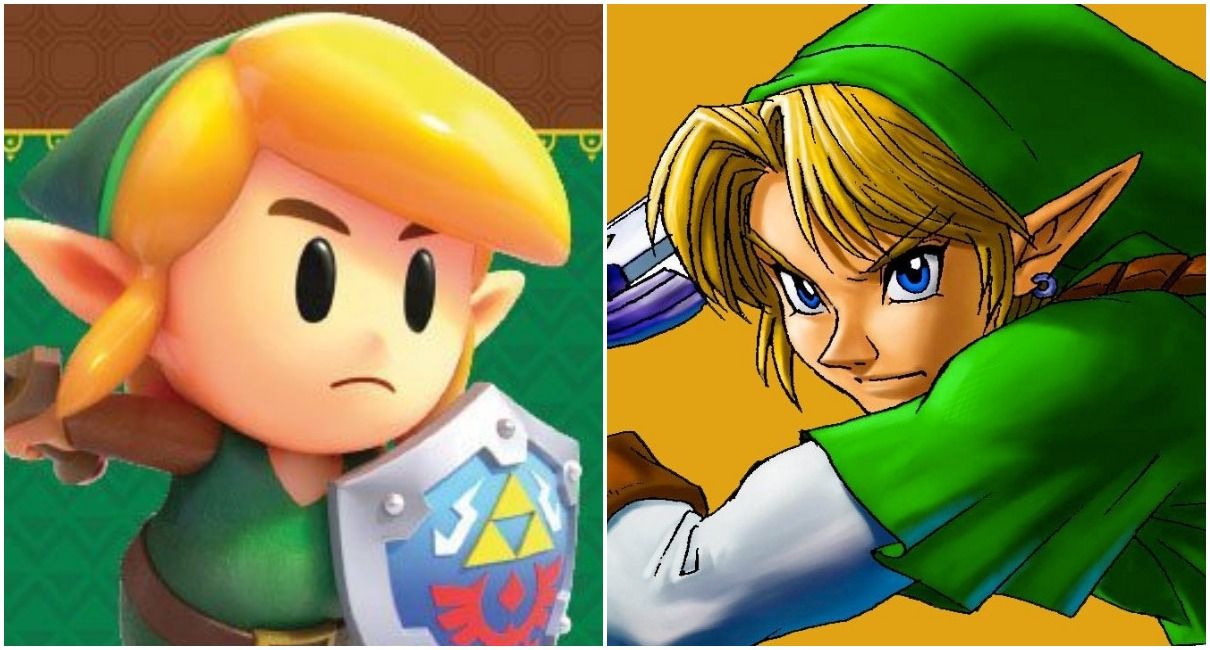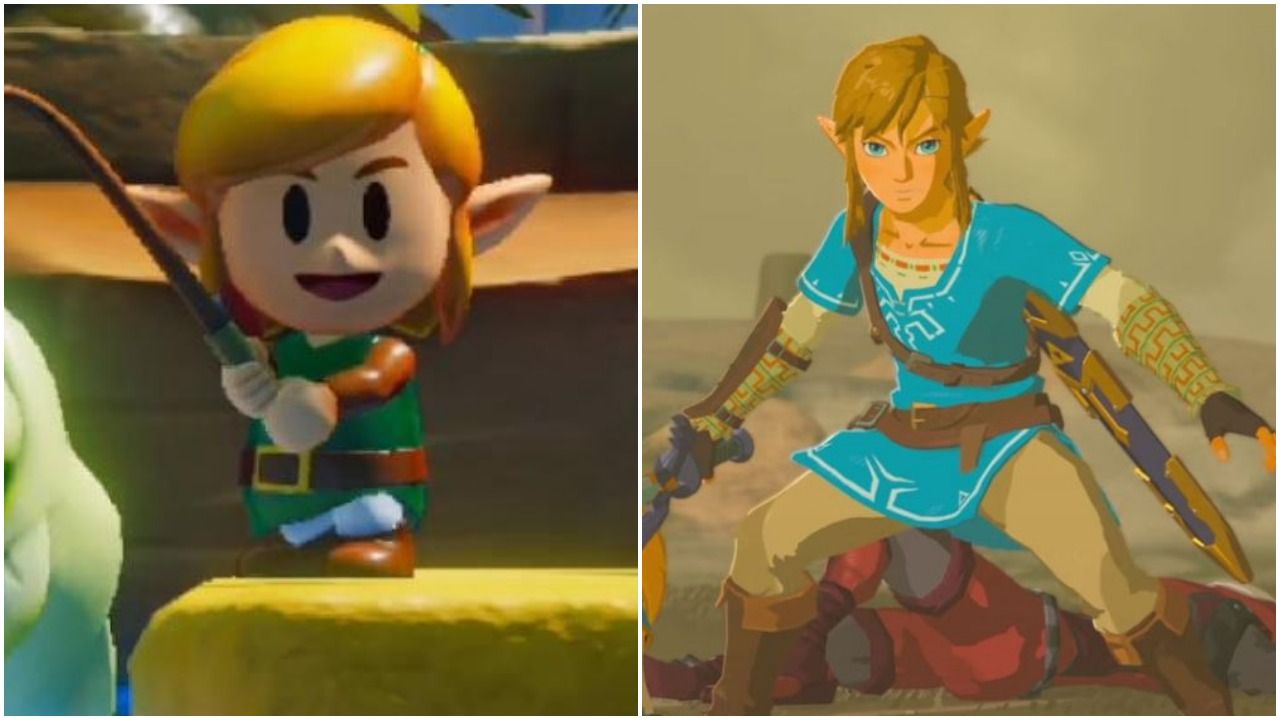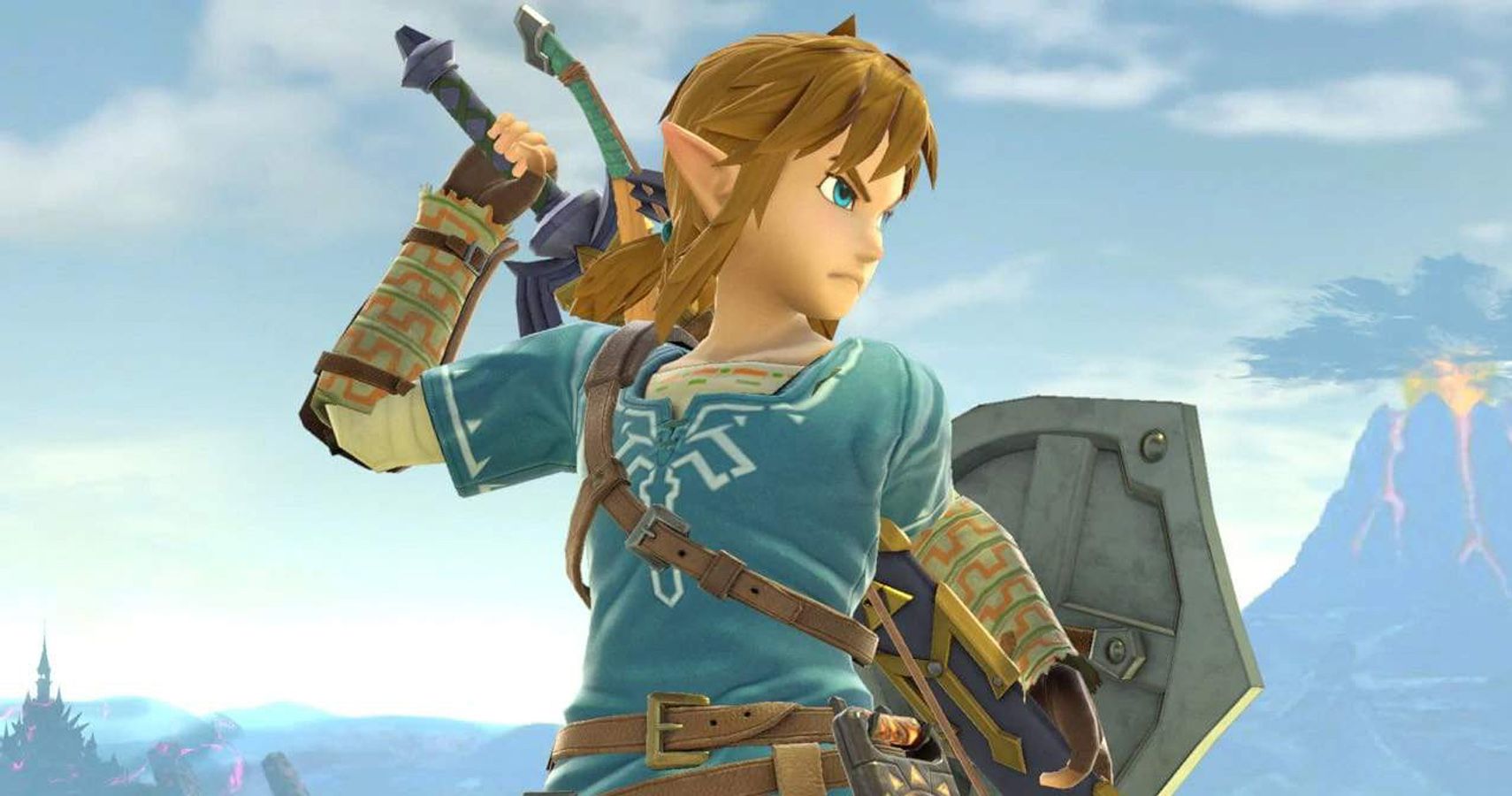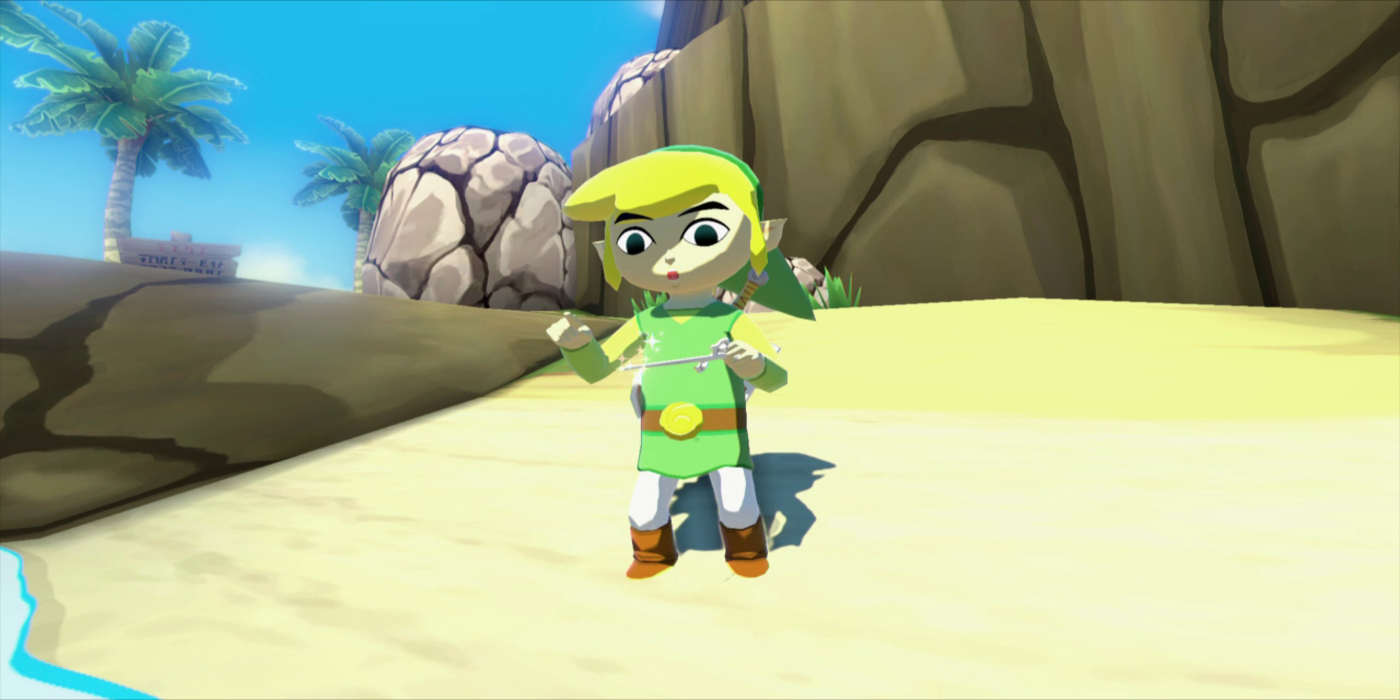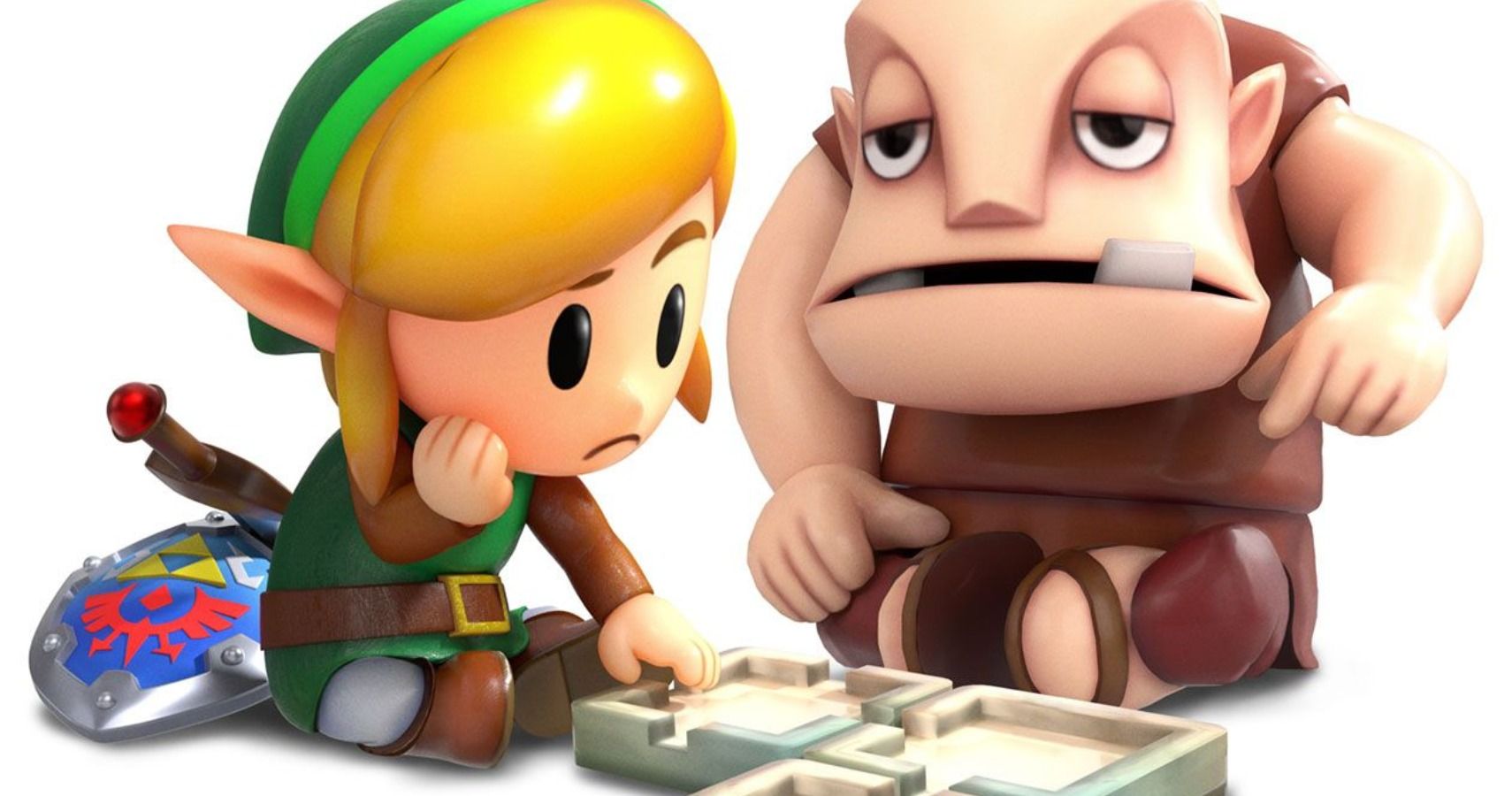Despite its name, The Legend of Zelda is the chronicle of Link. Sometimes he's a simple boy suddenly thrust into a great destiny. Other times he's a young man who sleeps in but is a reliable figure in his community. But however he starts, his journey forges him into a tried-and-true hero clad in green (Well, except for that whole Wild business).
Link is one of gaming's most iconic characters. His many artists deserve a lot of credit for that. They have to take a character who can be a kid or adult, a cartoon or an HD model, and make him recognizable to players. Just look at how different the two Nintendo Switch versions of Link look:
There are some things all the Links share that helps define them as "Link." They're quiet, except for their occasional yells. They have pointy ears and a hairstyle consisting of side-parted bangs with long sideburns. They also tend to have similar fashion senses, with tunics, brown boots, and pointy hats being standard (except, again, for that rebellious Wild Link). Yet, for as much as the Links have in common, playing Link's Awakening made one thing clear. Link is a much better character when he's a kid.
The Silent Hero Is Played Out
It's a well documented fact: Link was originally made into a silent hero so that he could be a stand-in for the player. It was important to The Legend of Zelda's developers that players felt like they were on an adventure, and putting themselves in the hero's shoes was part of that. That's why, even to this day, you can always re-name Link. In keeping with that, he also doesn't have dialogue. He might be able to respond to NPC text with his own, but what he says is chosen by the player. He never has voice acting, however, as doing so would mean creating a defined personality for him separate from the player's wishes.
It was a neat trick for the time, expertly towing the line between giving players full control over their quest and letting Nintendo have a marketable character. It also skirted the technical limitations of the time. Several decades later, the silent protagonist feels like a dated concept. In a world where Commander Shepard exists, gamers don't have to choose between having a protagonist with personality or having one they can live through. Breath of the Wild did a good job justifying Link's silence by having Zelda explain it as a character trait in her journal, but it should still be an exception. Not the rule. Link cannot go on being a blank slate.
A Younger Link Is A More Expressive Link
2D Link was a silent, expressionless character by necessity. You couldn't even see his face clearly because the graphics weren't good enough. Things changed when the Nintendo 64 brought us Ocarina of Time. Link had a face all of the time, and there were actual cutscenes. Link's eyes could widen when something shocking happened, and he could stare down Ganondorf. However, an emotional Link was not what people took from Ocarina. Fans and Nintendo latched on to the image of Link as a stoic, determined man (17 years old, technically, but we still call him adult Link). This is the Link that appears on most merchandise and in every Super Smash Bros. He's been the Link for a long time.
Then came a charming GameCube title called The Legend of Zelda: The Wind Waker. For me, this game redefined the character of Link. By that I mean he actually had a character. I still had the option to re-name him and "be" him, but his expressions were clearly his own. This incarnation would come to be known as "Toon Link" because of his cel-shaded form. His cartoonish depiction allowed for an array of expressions and even some physical comedy at his expense. Toon Link was just a kid, and it showed. He struggled with some of the physical challenges thrust upon him, he jumped with glee when he achieved a goal, and he got thrashed by Ganondorf at the beginning of their battle. Seeing him get so emotional and even have moments of weakness actually made him more relatable to me. When he finally became the Hero of Winds, I felt like he truly went on a journey and was changed by it.
Expressive Link Makes For Better Stories
It's no secret that Link's Awakening has one of the weirder Zelda stories. It turns out that (SPOILERS) Link dreamed up the whole island he was on. This explains why Super Mario characters suddenly appear in the Zelda world, and why the events just sort of happen. Because really, it's a hastily told tale. Link washes up on this island, an owl tells him to go a bunch of places and do some stuff, and he does it. Little explanation is given, and not until the end is anything called into question. The story doesn't get any expansion or clarification in the Nintendo Switch remake either. Despite that, the remake is getting amazing reviews. A large part of that is its adorable version of Link.
The whole game is done up in a toy diorama style, which lends it a cheerful and nostalgic vibe. With that comes a Christmas elf-looking Link who is the most adorable thing ever. While not as expressive as Toon Link, this Toy Link still errs on his side more than that of stoic Adult Link. And Link's Awakening is better for it. His very walk animation is amusing, and it's pure joy just guiding him around the bizarre island. I can forgive the lacking story because I'm having so much fun playing in this literal toy box. I don't think I would be saying the same if it was Adult Link in the spotlight.
Young Link Is The Future Of Zelda
Link is his own character now. Nintendo will, and should, continue to let us replace Link's name with our own. But the directors of the Legend of Zelda series should acknowledge that Link has become more than a stand-in for the player. And if Link is to continue evolving as a character, he's better off as a kid. Watching an green-clad kid struggle to become a hero, gritting his teeth as he faces impossible odds through courage alone, is the essence of the series. So bring on more Toon Link, and a lot more of Link's Awakening's Toy Link.

